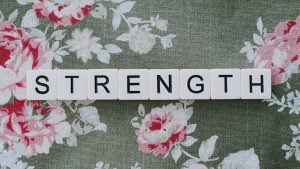
We must become stronger together
Recent years have demonstrated just how sensitive businesses is to disruption. Widespread supply chain crises – exacerbated by volatile geopolitical developments, lean just-in-time supply chains, and the COVID-19 pandemic – have wreaked havoc for businesses looking to ensure supply and safeguard their continuity of operations.
These challenges are not going away soon. With the emergence of the Omicron variant, we find ourselves facing yet more disruption and a very stark reminder that we are still firmly mired in the COVID-19 pandemic. Alongside coronavirus, we face another existential threat to people, the planet, and business: the escalating climate crisis. Expanding natural resource shortages, intensifying regulatory pressure, and escalating competition for scarce sustainable materials and logistics will present more hurdles for burdened businesses and stretched supply chains to overcome.
To weather the storm, we must find opportunities to become more resilient. In these times of disruption and shortage of supply, it has never been more important to forge deep, secure relationships with key suppliers to become their ‘customer of choice’. Customer of choice status puts procurement in a privileged position with a given supplier, offering priority access to new innovation and existing IP along with preferential pricing, and encouraging better cooperation and collaboration on supply chain sustainability initiatives.
We can go faster together
But increasing resilience alone won’t suffice. Businesses are also under pressure to find novel solutions to grow more rapidly, eliminating inefficiencies and waste along the way. In this situation, we must turn to innovation, science, and technology to pave the way and save the day.
While it may be small comfort, the past 18 months have shown us how much we can accomplish – and at a breakneck pace – if we collaborate to find solutions. When the WHO declared COVID-19 a pandemic on the 11th March 2020, very little was known about the virus. No one knew how to treat it, its long-term side effects for individuals, or the utter devastation it would wreak on fragile economies and global public health. Yet within 24 hours of the coronavirus genome being made publicly available, a vaccine development team at Oxford, led by Dame Sarah Gilbert and Dr Catherine Green, had designed a vaccine that would protect against its worst effects.
But their work wasn’t the end. We must also thank the scientists who conducted large-scale clinical trials, the regulators who found innovative ways to remove inefficiencies from complicated approvals processes, and every actor in the supply chain required for its complex manufacturing, production, and eventual deployment by AstraZeneca. That enormous collaboration is now saving millions of lives worldwide at cost.
The problem was gargantuan, and it needed to be remedied as rapidly as possible. Collaborative innovations in science and technology came to our rescue. In 2022 I hope businesses seek to apply this ‘many heads are better than one’ logic by collaborating with suppliers and partners to stamp out inefficiencies and find innovative solutions to their most challenging problems.
We need to do better together
Being stronger and going faster have always been the mainstay ambitions of organisations. But now, we must grow and accelerate sustainably.
We face a very real, very fierce fight to protect people and the planet. We are projected to overshoot the Paris Agreement’s target to limit global warming to 1.5˚C. With the vast majority of corporate emissions originating in the supply chain, we stand no chance of meeting this goal unless we work together.
But emissions aren’t the only area in which we need to drive vast improvement – sustainability encompasses the entire ESG agenda. In addition to emissions, we need to turn our attention to other impacts we have on the world around us. This includes:
- stamping out any chance of child labour or modern slavery in our supply chains,
- striving for a global fair living wage
- ceasing to rely on unsustainable, finite resources
- minimising and handling our waste better
- moving from a linear to a circular economy
These goals cannot be achieved in a vacuum, and they will not solve themselves without action.
Procrastination needs to stop. The balance must shift away from spending most of our time running the numbers over again and failing to act. This change must be driven hard by all of us – not only as business professionals, but as individuals – as employees, citizens, and consumers.
Why do we need multiple platforms to address sustainability goals
And finally, while the momentum in sustainable procurement will continue to accelerate exponentially, this will be coupled with demand for digital solutions to enable and scale these efforts.
In the last 3 months alone, the number of LinkedIn members listing Sustainable Procurement as part of their skillset or role has grown from 275,000 to over 320,000. This is hardly surprising given the increased corporate and investor focus on addressing our full impact on the environment. Usually, more than 80% of the average enterprise company’s carbon emissions sit in the supply chain. To address this is challenging and multi-faceted.
Organisations that prioritise sustainability targets above cost savings in employee assessment will ensure they are driving the right behaviours to support sustainable business outcomes. However, the sheer volume of suppliers plus the extent of the data and carbon calculations required is overwhelming. That threatens organisations with analysis paralysis when urgent action is needed. To combat this challenge, technology should be deployed to enable organisations to manage the sheer scale of required activity and analysis.
Despite this need for technology enablers, platforms are in short supply and frequently offer limited functionality; analyst market guides for supplier sustainability applications highlight the lack of comprehensive applications available to tackle the full sustainability agenda. As a result, businesses will need multiple platforms to address their sustainability goals. This might entail a combination of sustainability data aggregators, responsible sourcing solutions, and a Supplier Collaboration & Innovation platform to manage close collaboration with incumbent suppliers and to open-source sustainable transformation through innovation in as-yet undiscovered suppliers and partners.
As we look to navigate increasingly turbulent times and captain our organisations through these challenges, all of the elements I’ve highlighted above will be critical as we head into 2022 and beyond.

Vizibl has been named as one of the 5 technology companies changing the way organisations do business in the “IDC Innovators Report 2020”, has been nominated by Procurement Leaders in their ‘Technology of the Year 2020’ category and is ranked by Spend Matters in their “Top 50 Tech Companies To Watch” list. With a co-founding team led by Mark Perera (founding CEO of Procurement Leaders) and Alex Short, Vizibl is transforming how companies tap into the power of their suppliers.
























